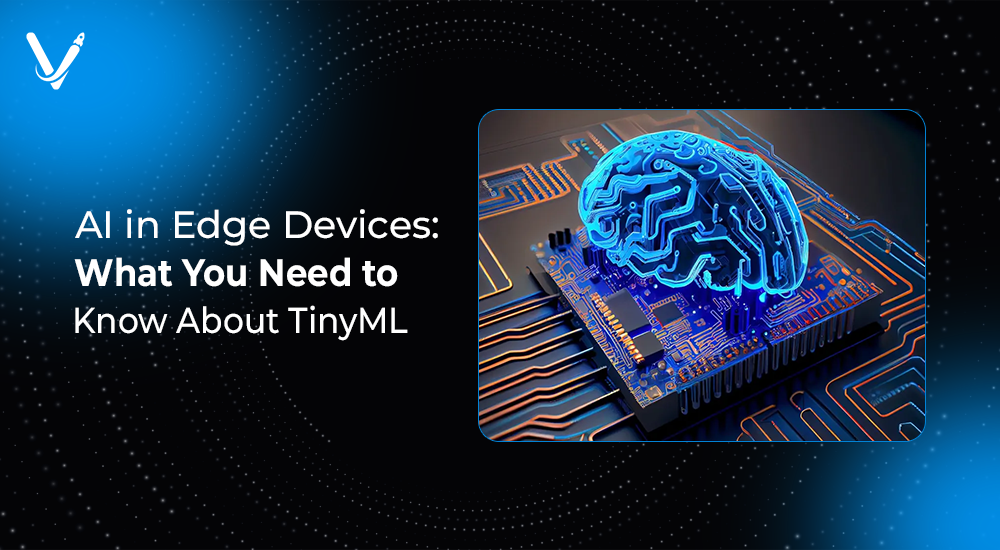AI in Edge Devices: What You Need to Know About TinyML


- Aug 24, 2025
Artificial Intelligence is no longer confined to the cloud or large-scale data centers. A powerful new movement is bringing AI directly to the edge—inside the very devices we use daily. Imagine a wearable that can detect health anomalies instantly, a smart camera that recognizes threats without internet connectivity, or industrial sensors that predict equipment failures in real time. This is not futuristic speculation; it is the reality enabled by Tiny Machine Learning (TinyML).
TinyML represents a convergence of embedded systems and AI, designed to run complex models on microcontrollers and low-power processors. This technology is transforming industries by making AI lightweight, cost-effective, and efficient, opening the door for a new wave of intelligent edge devices. In this article, we’ll explore the essence of TinyML, its advantages, key use cases, challenges, and why it is reshaping the future of edge AI.
For organizations, the question isn’t just “What is TinyML?” but rather “Why should we invest in it?” This section introduces the business side of the story—how TinyML is creating opportunities for scalability, cost reduction, customer trust, and competitive differentiation.
By embedding AI into devices directly, businesses are not just cutting costs; they’re creating entirely new categories of smart products.
By embedding AI directly into devices, businesses can scale across industries without investing heavily in back-end cloud infrastructure.
Processing sensitive information locally fosters user trust, particularly in healthcare and financial services.
Low-power AI models align with global sustainability goals, enabling green innovation.
Companies adopting TinyML early can create differentiated, intelligent products that stand out in competitive markets.
Like any emerging technology, TinyML is not without its challenges. While its promise is undeniable, adoption comes with hurdles such as constrained hardware resources, deployment complexities, and data management issues.
Developers must carefully balance accuracy and performance while designing lightweight models for constrained hardware.
Adapting models to various devices and hardware platforms adds complexity to development cycles.
Collecting, labeling, and optimizing edge data for ML training can be resource-intensive.
While on-device processing enhances privacy, devices remain vulnerable to physical tampering or firmware attacks.
TinyML requires expertise in embedded systems, machine learning, and hardware optimization, creating a steep learning curve for teams.
TinyML is not just a current trend—it is paving the way for the next generation of intelligent devices. This section explores the future trajectory of TinyML, where it intersects with innovations like 5G, federated learning, and specialized AI-first hardware.
TinyML combined with 5G networks will enhance distributed intelligence, enabling ultra-low latency applications like autonomous drones and remote surgeries.
Devices may train locally and contribute model updates to a global system, combining the best of personalization and collective intelligence.
As demand for TinyML grows, semiconductor companies are building chips optimized for AI inference, paving the way for even more powerful edge devices.
Open-source platforms, developer communities, and startups are fueling innovation, making TinyML accessible to businesses of all sizes.
